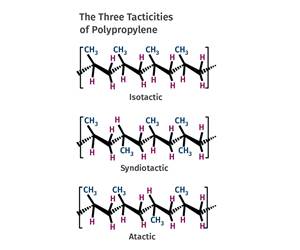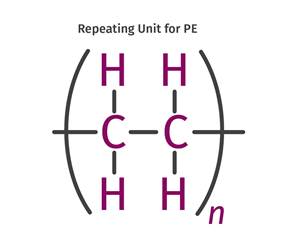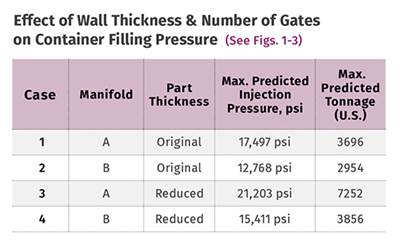Polymer Showdown — PC/ABS vs. PC/PBT — May the Best Material Win
First in a series, experts from plastics engineering consultancy The Madison Group will pit leading thermoplastics against each other to see how they differ in processing characteristics, chemical resistance, thermal and mechanical performance, and more.
Welcome to the ultimate showdown in the world of polymers. In one corner, we have the versatile and tough PC/ABS blend, while in the other, the chemically resistant and durable PC/PBT blend. Both contenders have unique properties and applications, making them popular choices in various industries, but which one will emerge as the champion in this head-to-head battle? Join us as we delve into the strengths and weaknesses of each, comparing their chemical structures, various properties and processing characteristics.
Round 1: Chemical Structure
PC/ABS is a blend or alloy of polycarbonate (PC) and poly(acrylonitrile butadiene styrene) (ABS). PC is known for its high impact strength, stiffness and heat resistance, while ABS features good dimensional stability, low warpage and excellent processing properties. The combination of these polymers results in a material that balances the mechanical performance of PC with the processability and low-temperature performance of ABS. The fact that ABS is a terpolymer with three different functionalities enables further customization of its properties. Acrylonitrile promotes heat and chemical resistance; butadiene contributes to impact strength and low-temperature property retention; and finally styrene adds surface finish and moldability.
PC/PBT, meanwhile, is an immiscible physical blend of polycarbonate (PC) and polybutylene terephthalate (PBT). The PC here is the same polycarbonate as in PC/ABS, while PBT is a semicrystalline polymer, which provides great chemical resistance and strong tensile strength, as well as high UV, weather, wear and electrical resistance. The blend of PC and PBT results in a material that offers a good balance of impact strength, dimensional stability and chemical resistance.
Round 2: Thermal Properties
PC/ABS and PC/PBT exhibit distinct thermal behaviors due to the differences in their components (Figure 1). The higher glass transition temperature (Tg) of PC/ABS is influenced by the PC component, which has a Tg of around 150°C. The addition of ABS can slightly lower the overall Tg of the blend, whether miscible or immiscible, as shown in Figure 1. PC/PBT, on the other hand, has a lower Tg due to the presence of PBT, which has a Tg around 60°C. Because PBT is immiscible with PC, the Tg of the material remains fixed at 60°C.
The higher Tg of PC/ABS compared to PC/PBT would also mean better retention of mechanical properties up to the glass transition temperature(s) of the PC/ABS material. This is illustrated in Figure 2 where the comparison of the dynamic mechanical analysis (DMA) thermograms of PC/ABS and PC/PBT demonstrates how the storage modulus of PC/PBT drops lower than that of PC/ABS through its Tg of about 50°C.
It should be noted that the usable temperature of PC/PBT — or any plastic for that matter — can be increased with the addition of reinforcements such as glass fibers. As shown in Figure 3, the storage modulus of PC/PBT with 11% glass fiber content is very similar to that of virgin PC/ABS at 100°C as the glass fibers increase stiffness in the material.
Figure 1 – Differential Scanning Calorimetry (DSM) thermograms demonstrating the thermal transition of a PC/ABS blend, PC/ABS alloy and PC/PBT. Source (all images): The Madison Group
Figure 2 – Dynamic Mechanical Analysis (DMA) comparison of PC/ABS and PC/PBT. PC/ABS inherently retains mechanical stiffness at higher temperatures than PC/PBT due to the higher Tg of PC/ABS.
Figure 3 – DMA comparison of PC/PBT with 11% glass-fiber content compared to virgin PC/ABS and virgin PC/PBT.
Round 3: Mechanical Properties
Both PC/ABS and PC/PBT offer a good balance of stiffness and tensile strength, but with some notable differences (Table 1). PC and ABS offer excellent impact properties across a wide temperature range. The butadiene component in ABS specifically increases its low-temperature impact resistance. PBT on the other hand lacks inherent impact strength and relies on PC to carry the impact properties, but without butadiene, there is poor subambient impact strength. Due to the inherent wear resistance of both PC and PBT, PC/PBT blends offer superior wear properties compared to PC/ABS blends — although specific wear conditions for an application could depend on multiple factors and should be thoroughly tested.
Round 4: Chemical Resistance
The exact chemical resistance of the compounds is dependent on the ratio of the components. In general, PC/PBT exhibits better chemical resistance compared to PC/ABS due to the semicrystalline structure of PBT. The PBT component provides excellent resistance to a wider range of chemicals, including solvents, alcohols and oils (Table 2).
Round 5: Environmental Resistance
Overall, PC/ABS and PC/PBT have good environmental resistance but with some differences. PBT offers long-term thermal oxidative (TO) resistance above its Tg closer to its melting point. PC and ABS as amorphous resins only have TO resistance below that of their Tg. Therefore, TO resistance of PC/PBT would be expected to be higher than that of PC/ABS.
At room temperature, moisture absorption in PC/ABS and PC/PBT is low, but there is poor resistance in PC/PBT to water above 60°C. This is because both PC and PBT are condensation polymers and are susceptible to hydrolysis. While ABS does not undergo hydrolysis, it is not able to overcome the hydrolysis of PC in PC/ABS blends, especially at elevated temperatures. It is not recommended to use either PC/ABS or PC/PBT in hot-water applications.
Both PC/ABS and PC/PBT exhibit a degree of inherent UV resistance. PC and PBT both retain their properties, and yellowing is observed in PC. ABS, specifically the butadiene component, is more susceptible to UV degradation. It is expected that both blends would have fair inherent UV resistance, with some yellowing due to the presence of PC. It’s crucial to remember that for applications involving substantial UV exposure, formulations of both PC/ABS and PC/PBT typically include UV absorbers and stabilizers to enhance long-term performance.
Round 6: Processing
PC/ABS and PC/PBT have distinct processing characteristics. PC/ABS is known for its excellent processability, offering good flow and low shrinkage in molding. The ABS component contributes to the good flow properties and low warpage of the blend. PC/ABS can be easily molded into complex shapes with tight tolerances.
PC/PBT also has good processing characteristics, but with some differences compared to PC/ABS. PC/PBT typically has higher melt viscosity and higher shrinkage in molding. The PBT component contributes to the higher viscosity and shrinkage. However, PC/PBT still offers good dimensional stability and can be molded into various shapes. It should be noted that because PC and PBT are condensation polymers, they are both susceptible to hydrolysis during molding if proper drying procedures are not followed.
The Verdict
In the battle of PC/ABS versus PC/PBT, there is no clear winner. The choice between these two polymer blends depends on the specific application requirements. PC/ABS emerges as the champion for applications requiring high impact strength (particularly at low temperatures) and excellent processability. Its combination of toughness, stiffness and dimensional stability makes it a versatile choice for various industries
On the other hand, PC/PBT takes the crown for applications demanding high chemical resistance and good environmental resistance. Its ability to withstand a wide range of chemicals and its durability in harsh environments make it a preferred choice for automotive, electrical and industrial applications.
Ultimately, the best material for a specific application depends on factors such as mechanical properties, chemical resistance, environmental resistance, processing characteristics and cost considerations. By carefully evaluating these factors, engineers and designers can select the polymer blend that best meets the needs of their application (Table 6).
About the Authors: Jack DeSousa is a graduate of Winona State University with a degree in composite materials engineering. DeSousa is a project engineer with and specializes in failure analysis, design and material testing, and characterization. He has performed more than 600 product evaluations and over 75 chemical/material analyses for industrial clients as well as having supported many more. Contact: 608-231-1907; jack.desousa@madisongroup.com; .
Richie Anfinsen is a graduate of Winona State University with a degree focused on the design, manufacturing and analysis of thermoset composites. Anfinsen is a senior project engineer at , where has run hundreds of failure and material investigations across medical, automotive, consumer and many other sectors. His project work has had a strong focus on material analysis and deformulation efforts, which have helped customers during initial design, manufacturing and failure-analysis efforts. Contact: 608-231-1907; richie.anfinsen@madisongroup.com; .
Related Content
Polymer Science for Those Who Work With Plastics: Molecular Weight — What It Is and Why It Matters
Molecular weight might seem like an abstract concept, but it plays a crucial role in determining the behavior of plastics during processing and in their final applications.
Read MoreFundamentals of Polyethylene – Part 5: Metallocenes
How the development of new catalysts—notably metallocenes—paved the way for the development of material grades never before possible.
Read MorePolymer Science for Those Who Work With Plastic — Part 1: The Repeat Unit
What are the basic building blocks of plastics and how do they affect the processing of that material and its potential applications in the real world? Meet the repeat unit.
Read MoreThe Fundamentals of Polyethylene – Part 2: Density and Molecular Weight
PE properties can be adjusted either by changing the molecular weight or by altering the density. While this increases the possible combinations of properties, it also requires that the specification for the material be precise.
Read MoreRead Next
Get the Most From Fiber-Reinforced Thermoplastic Composites Parts
There are five specific areas that designers and manufacturers need to consider to realize the potential of these unique materials.
Read MoreINJECTION MOLDING: The Importance of Nominal Wall For Lightweighting Molded Parts
Establishing a nominal wall is one of the most important decisions an engineer makes when designing parts. Understanding how design changes will impact the manufacturing process is critical to ensure the part performs as expected.
Read MoreBeyond Prototypes: 8 Ways the Plastics Industry Is Using 3D Printing
Plastics processors are finding applications for 3D printing around the plant and across the supply chain. Here are 8 examples to look for at NPE2024.
Read More











